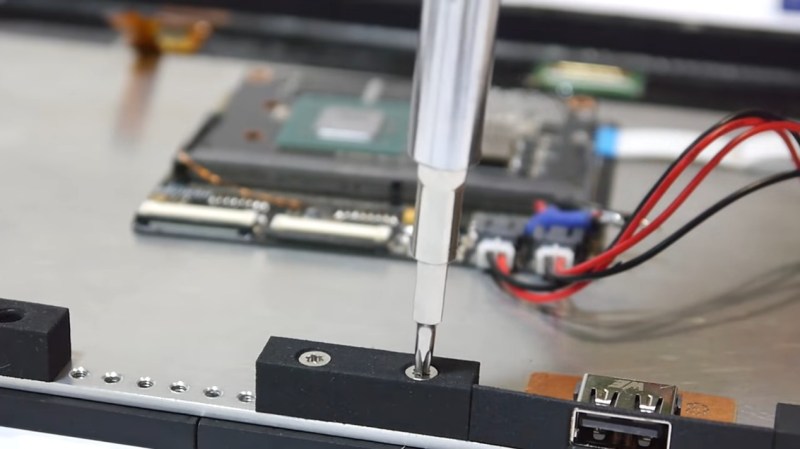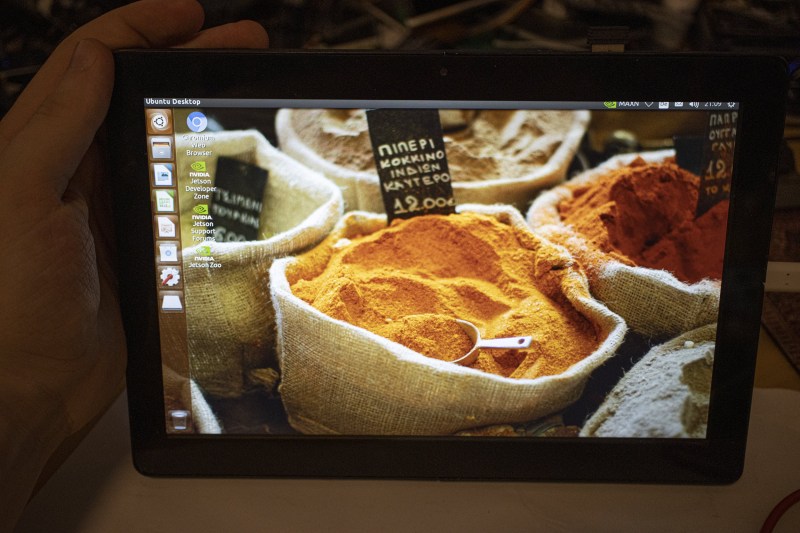Tablets, slates, phones, and fablets, there are no shortage of electronics that take the Star-Trek-ish form factor of a handheld rectangle of glass that connects you to everything. This is the world we live in, but unfortunately it’s not currently a world with many Linux options, and certainly not one that includes modular design concepts. This is what motivated [Timon] to design the Damn Linux Table one, a “Proper Linux Tablet” built around the Nvidia Jetson Nano board.
The design really took off, because who isn’t interested in the ability to upgrade and customize a tablet? During last year’s Hackaday Supercon we caught up with [Timon] for an interview the morning after he won the Best Design prize for DLT one. Check out that video below, then join us after the break for an update on the latest from the project.
There’s only one week left to get your project entered in the 2020 Hackaday Prize. We won’t know this year’s winners until the Hackaday Remoticon rolls around this November. The Call for Proposals for that virtual conference is still open!
[Timon] is realistic about the limits of modular design. He readily admits you’re not going to upgrade a graphics card on a mobile device, but when it comes to the peripherals, why not? You might want to choose between micro-USB, USB-C, barrel-jack, or do something completely custom. One hacker’s NFC equipment might be replaced by another’s SDR or LoRa. This tablet design sees a world where connecting PCIe components to your mobile devices is completely doable. The point is to make a base model that works great, but has the potential to be what each different user wants their device to be.
It should have come as no surprise to everyone paying attention that [Timon] won the Best Design in the 2019 Hackaday Prize for the Damn Linux Table one. He tells the story of the design is this superb overview video that includes a teardown of the prototype. In it we’re introduced to the aluminum plate that makes up the central slice of the tablet, with screen attached to the front side and the uniformed modular mounting holes milled around the edge of the back side that allows components and spacers to be easily positioned.
At the center of the plate is the “motherboard” designed to break out the IO of the Jetson Nano system-on-module (SOM). Flat cables bridge the gap from the motherboard to peripherals you choose to use. The really interesting thing about the Jetson is that it uses a SO-DIMM module and [Timon] went with a reverse-mount connector. That way, a cutout in the motherboard allows the module’s chip to pass through the circuit board and make contact with the aluminum plate as a heat sink.
The $10,000 prize has allowed him to continue iterating on the design. Last month we were treated to an update on the progress of the tablet’s display. It was a struggle to get the DisplayPort screen working because there is a bug in the driver when dealing with 2-lane screens. The 10.1″ 4-lane screen shown here is working at a beautify 2560×1440. With that technical hurdle pushed aside, progress is once again under way to polish up the fit and finish and begin work on the battery management system.
Projects like this one are a tour de force of skills that at one time would have taken an entire company. The fact that this can be designed by one person is a testament to the hacker community sharing feedback and skill, the availability of design tools, the accessibility of supply chains for individuals, and above all the determination of Timon to see the project continue. Head on over to his project page, there’s a week’s worth of reading there and the opportunity to send kudos and constructive feedback.






No comments:
Post a Comment